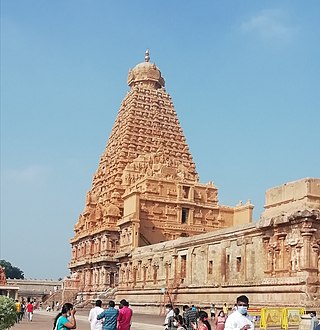See also
- George Temple-Poole (1856–1934), British architect and public servant
- All pages with titles containing George Temple
George Temple may refer to:
Pantheon may refer to:
Ahijah is a name of several biblical individuals:

Indiana Jones and the Temple of Doom is a 1984 American action-adventure film directed by Steven Spielberg from a script by Willard Huyck and Gloria Katz, based on a story by George Lucas. It is the second installment in the Indiana Jones film series and a prequel to Raiders of the Lost Ark. The film stars Harrison Ford, who reprises his role as the title character. Kate Capshaw, Amrish Puri, Roshan Seth, Philip Stone, and Ke Huy Quan, in his film debut, star in supporting roles. In the film, after arriving in British India, Indiana Jones is asked by desperate villagers to find a mystical stone and rescue their children from a Thuggee cult practicing child slavery, black magic, and ritual human sacrifice in honor of the goddess Kali.
Temple of Apollo may refer to:

Baron Harris, of Seringapatam and Mysore in the East Indies and of Belmont in the County of Kent, is a title in the Peerage of the United Kingdom.
Bethel is a biblical site.

A Hindu temple, also known as Mandir, Devasthanam, Pura, or Kovil, is a sacred place where Hindus worship and show their devotion to deities through worship, sacrifice, and prayers. It is considered the house of the god to whom it is dedicated. Hindu temple architecture, which makes extensive use of squares and circles, has its roots in Vedic traditions, which also influence the temples' construction and symbolism. Through astronomical numbers and particular alignments connected to the temple's location and the relationship between the deity and the worshipper, the temple's design also illustrates the idea of recursion and the equivalency of the macrocosm and the microcosm. A temple incorporates all elements of the Hindu cosmos—presenting the good, the evil and the human, as well as the elements of the Hindu sense of cyclic time and the essence of life—symbolically presenting dharma, artha, kama, moksha, and karma.
Templer is an English surname, and may refer to:
A temple is a building used for religious practices and activities.

The St. George Utah Temple, formerly known as the St. George Temple, is a temple of the Church of Jesus Christ of Latter-day Saints in St. George, Utah. Completed in 1877, it was the third temple constructed by the church and the first in Utah, following the westward migration of Mormon pioneers from Nauvoo, Illinois, after the death of church founder Joseph Smith.
The Hebrew Benevolent Congregation Temple bombing occurred on October 12, 1958, in Atlanta, Georgia. The Hebrew Benevolent Congregation Temple, on Peachtree Street, housed a Reform Jewish congregation. The building was damaged extensively by an explosion caused by dynamite, although no one was injured. Five suspects were arrested almost immediately after the bombing. One of them, George Bright, was tried twice. His first trial ended with a hung jury and his second with an acquittal. As a result of Bright's acquittal, the other suspects were not tried, and no one was ever convicted of the bombing.
Shaolin may refer to:
Menorah may refer to:

Brihadishvara Temple, called Rajarajesvaram by its builder, and known locally as Thanjai Periya Kovil and Peruvudaiyar Kovil, is a Shaivite Hindu temple built in a Chola architectural style located on the south bank of the Cauvery river in Thanjavur, Tamil Nadu, India. It is one of the largest Hindu temples and an exemplar of Tamil architecture. It is also called Dakshina Meru. Built by Chola emperor Rajaraja I between 1003 and 1010 CE, the temple is a part of the UNESCO World Heritage Site known as the "Great Living Chola Temples", along with the Chola-era Gangaikonda Cholapuram temple and Airavatesvara temple, which are about 70 kilometres (43 mi) and 40 kilometres (25 mi) to its northeast respectively.
George Bush most commonly refers to:

Vaikom Satyagraha, from 30 March 1924 to 23 November 1925, was a nonviolent agitation for access to the prohibited public environs of the Vaikom Temple in the Kingdom of Travancore. Kingdom of Travancore was known for its rigid and oppressive caste system. The campaign was conduct and led by Congress, leadersT. K. Madhavan, K. Kelappan, K. P. Kesava Menon. Other notable leaders who participated in the campaign include Mannath Padmanabhan, George Joseph, E. V. Ramasamy "Periyar" and it was noted for the active support and participation offered by different communities and a variety of activists.
Temple Israel may refer to:
White dog or White Dog may refer to:
Shizuoka can refer to:
Gopal Krishna may refer to: